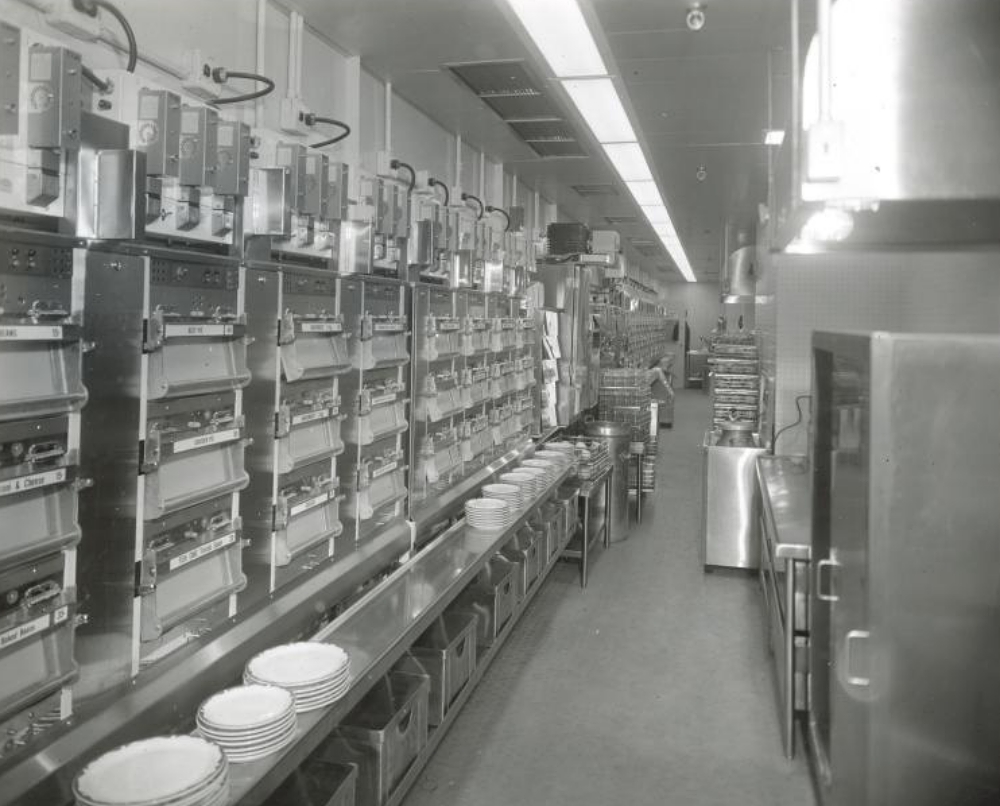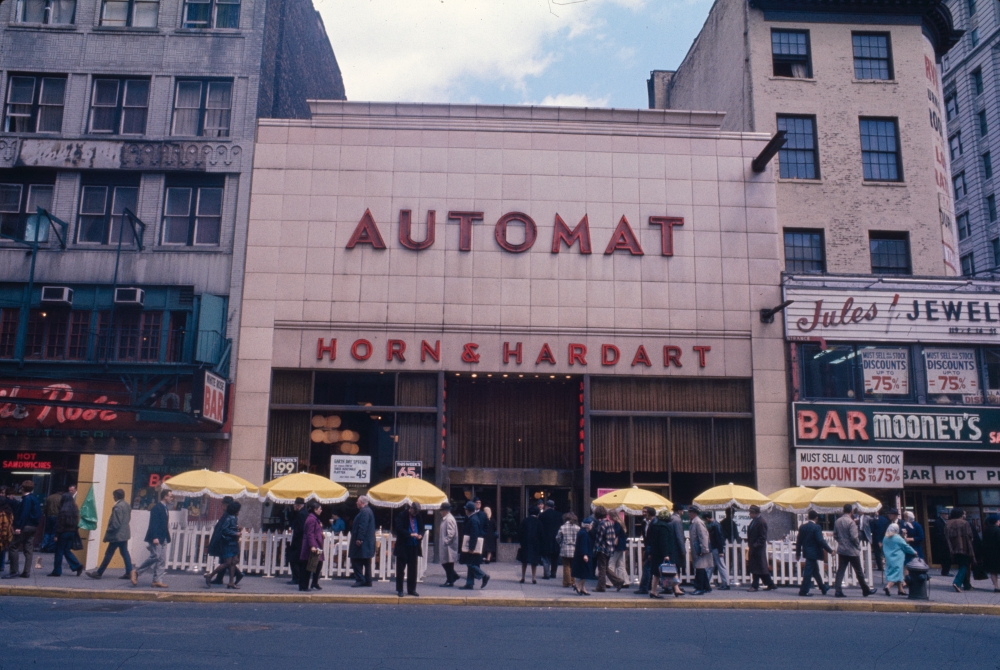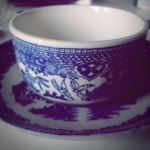Today there are vigorous debates on whether self checkout machines hurt or help employees, with some people refusing to use them at all. However, flash back to the late 1800s and people were thrilled by the prospect of an automated diner. The first automats were opened in Berlin, Germany, by the Quisisana company after an exhibit at the 1887 World’s Fair in Brussels. Soon other European cities were hosting automats and the concept was licensed to the American company of Horn & Hardart. In 1902 the first automat in the US opened in Philadelphia, with locations in New York soon to follow.

At the time crowds raved about the new-fangled self-serve restaurants. Customers with little time to spare didn’t have to wait for a server to come to the table, while those who wished to linger at the automat could, since there was no waitstaff to hurry them out the door. It was ideal for both the people with no time to waste and those with lots of time to kill.
By the 1930s the automat had caught on as a cheap and quick way to grab a snack or a meal. There was often a “steam table” were customers could get additional foods like soup, eggs, pancakes, and other hard-to-serve foods served cafeteria-style on sliding trays. To go alongside this there was a station of complimentary crackers and condiments. Lemon slices and hot water were also available for free in many automats. Using these freebies people during the Great Depression were able to make some hot lemon water to drink and fill up on ketchup and cracker sandwiches. Some also combined the hot water with ketchup to make a sort of tomato soup.

During the 1930s the automat became the everyman’s diner and the chrome detailing of many of the machines fed into the idea that these were modern, hi-tech places to eat. Automats seemed like the wave of the future, with operators in the back constantly refilling the automat windows for an endless stream of urban customers.
Migration to America’s cities was widespread in the interwar period and throngs of working class people descended on metropolitan areas, each of them searching for affordable meals. Many young (and broke) future stars flocked to automats, such as Irving Berlin, Chita Rivera, and Mel Brooks- each of them favoring a meal at the automat.

In the early 1900s a cup of coffee at an automat was 5 cents. Meals were also dirt cheap and there was no waitress to tip. But, following the Second World War Horn & Hardart raised the price of the coffee to 10 cents a cup. This proved to be disastrous as by that time the novelty of the automat had worn off and the low prices were what had driven customers to eat there.
Over the years inflation not only affected the price of the food, but also the medium by which it was purchased. Rising prices for everyday goods meant that most people were using paper money more and more. In some locations change was offered, but the thrill of a meal bought with few coins had become less of a reality.
Another nail in the coffin for the automat was the rise of fast food. Similarly cheap, fast food chains offered lighter meals in to-go packaging that appealed to a larger base of consumer. By the 1970s many automats were failing and by 1991 the last Horn & Hardart location in New York had shut down.

Over the years there have been fleeting attempts to revive the automat, but none have so far succeeded. And, even if they had it seems unlikely that any modern establishment could echo the Art Deco wonder that was the 20th century automat.













